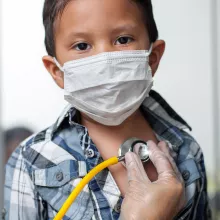A recent journal article in Health Affairs by Nadereh Pourat, the Center’s director of research, garnered attention for its headline that one-quarter of Californian children have never seen a dentist. Beneath that statistic, however, are equally disturbing data about dental health inequities. Pourat and her co-author found that even with publically-funded insurance, low-income minority children were less likely to get regular dental care. Here Pourat discusses some of the reasons why, how health care reform may affect the situation, as well as what to do about the shortage of dentists in low-income communities.
Q: Publically-insured kids go longer between dental visits. Why?
Public programs have made great strides in getting kids to see the dentist, but not as frequently as private insurance. The lower frequency may be because fewer dentists participate in public programs and these programs pay lower fees than private insurance. Parents may also not fully understand the importance of regular visits or have difficulties taking time-off from work to take their children for visits.
Q: One of the main reasons for the difference in the frequency of visits to dentists between publicly- and privately- insured kids may be because not enough dentists accept Medicaid. Is this likely to change anytime soon?
Many believe that with the recent cuts in adult dental benefits, the numbers of dentists who accept public insurance will drop. This may be specially impacting private practice dentists who did not take many of these patients and find the required paperwork too cumbersome. Health care reform may increase the number of children in public insurance and increase the number of alternative dental providers in the long run. The future is uncertain at this point.
Q: What should be done to increase the pool of Latino and African-American dentists and dentists willing to work in low-income communities?
There are some efforts underway to train more Latino and African-American dentists and to train dental students in low-income communities with the hope being that they would continue their practice in such communities. There are also school loan repayment programs that bring dentists to areas with shortages of these professionals. Another way to provide care to children in low-income communities is by bringing dentists and hygienists directly to school clinics. An added benefit to this is that it makes it easy for busy parents to ensure their children are getting dental care.
Read the journal article: Racial and Ethnic Disparities in Dental Care for Publicly Insured Children














